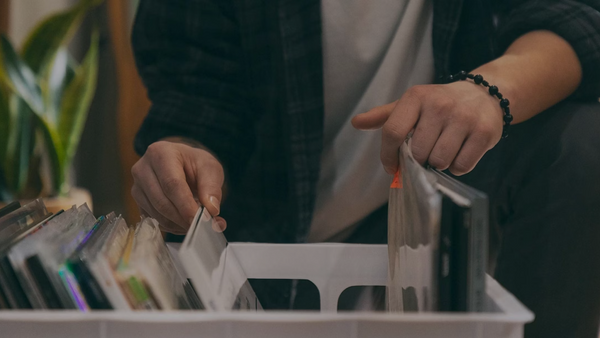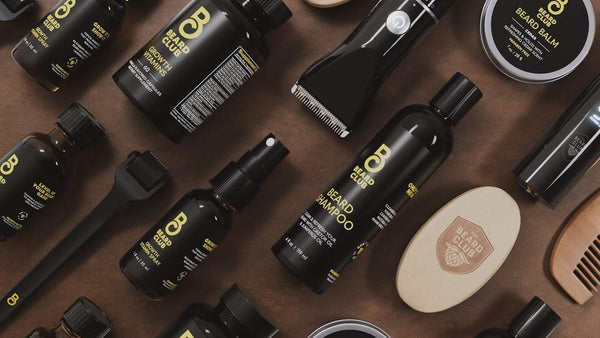How to Add Minimum Order Quantity in Shopify: A Comprehensive Guide
Table of Contents
- Introduction
- Understanding Minimum Order Quantity (MOQ)
- Methods to Add Minimum Order Quantity in Shopify
- Best Practices for Optimizing Minimum Order Quantity
- Wrapping Up: Empowering Your Shopify Store
- FAQ
Introduction
Did you know that setting minimum order quantities (MOQs) can significantly boost your average order value and streamline your operations? As eCommerce professionals, we constantly seek ways to enhance our business strategies and improve customer satisfaction. In an increasingly competitive landscape, understanding how to add minimum order quantity in Shopify can be a game-changer for our online stores.
Establishing MOQs not only helps us manage inventory effectively but also encourages customers to make larger purchases. This strategy is particularly beneficial for businesses that sell lower-priced items or want to cover shipping costs efficiently. By the end of this blog post, we will explore the ins and outs of implementing minimum order quantities in Shopify, discuss various methods to do so, and provide actionable insights to optimize your eCommerce operations.
Throughout this article, we will cover the following key aspects:
- Understanding the concept of minimum order quantity (MOQ)
- The benefits of setting MOQs for suppliers and buyers
- Effective methods to implement MOQs in your Shopify store
- Best practices for optimizing your MOQs
As we delve into these topics, we invite you to reflect on your current digital strategies and consider how integrating MOQs can enhance your business performance. Our goal is to empower you to make informed decisions that drive growth and operational efficiency.
Understanding Minimum Order Quantity (MOQ)
What is Minimum Order Quantity?
Minimum order quantity (MOQ) refers to the smallest quantity of a product that a supplier is willing to sell in a single order. This threshold ensures that businesses can cover their production or operational costs, thus maintaining profitability. For instance, if a supplier sets an MOQ of 10 units, a buyer must purchase at least 10 units to complete the order.
Why do Suppliers Use MOQs?
Suppliers implement MOQs for several strategic reasons:
- Financial Viability: MOQs help cover fixed costs associated with production, such as labor and materials, ensuring that each order contributes positively to their bottom line.
- Streamlined Production: By encouraging bulk orders, suppliers can optimize manufacturing efficiency and minimize waste.
- Improved Quality Control: Higher production volumes allow for better quality management and quicker turnaround times.
- Sustainable Business Practices: MOQs foster a more stable and reliable supply chain, benefiting both suppliers and buyers.
Benefits of MOQs
Implementing MOQs can yield significant advantages for both suppliers and buyers:
- For Suppliers: MOQs help maintain healthy profit margins, reduce fulfillment costs, and ensure efficient inventory turnover.
- For Buyers: MOQs can lead to lower prices per unit, access to exclusive deals, and improved product availability.
Methods to Add Minimum Order Quantity in Shopify
Shopify does not have a built-in feature for setting MOQs, but there are effective ways to implement this functionality. We will explore three primary methods: using Shopify's built-in settings, custom coding, and third-party apps.
Method 1: Setting Minimum Order Quantity Using Shopify Settings
Shopify's Catalogs section allows us to manage product pricing and set order rules, making it possible to establish minimum order quantities.
- Go to Shopify Admin: Log in to your Shopify account and navigate to the "Products" section.
- Access Catalogs: Click on "Catalogs" and select the catalog you want to edit.
- Manage Products and Pricing: Within the "Products and Pricing" section, click on "Manage" and then "Manage products and pricing."
- Add Quantity Rules: In the Quantity Rules column, click on "+ Add" to open the Edit Quantity Rules dialog. Here, we can set the minimum quantity required for each product variant.
This method is ideal for merchants who prefer a straightforward approach without heavy customization. However, it is essential to note that quantity rules apply to each product variant independently.
Method 2: Custom Coding for Minimum Order Quantity
For those with more technical expertise, custom coding allows for greater flexibility in setting MOQs. This method is beneficial for businesses that require specific rules for different products or variants.
- Access Theme Code: In your Shopify admin, navigate to "Online Store" and click on "Themes." Choose the theme you want to edit and click on "Actions" > "Edit Code."
-
Locate Product Template: Find the product template file (usually called
product-template.liquidorproduct-form.liquid). -
Add Custom Code: Insert a conditional statement that checks the product tags and sets the minimum quantity based on the tag. For example:
{% if product.tags contains 'MIN4' %} <input type="number" min="4" value="4" /> {% else %} <input type="number" min="1" value="1" /> {% endif %}
This code snippet ensures that products tagged with 'MIN4' require a minimum quantity of 4, while all other products default to a minimum of 1.
Method 3: Using Third-Party Apps
For those who prefer a more user-friendly approach, several third-party apps can help manage MOQs effectively. These apps often come with added features, such as tiered pricing and customized notifications for customers.
- Order Limits - MinMaxify: This app allows you to set minimum and maximum quantities for specific products or across your store. Its user-friendly interface makes it easy to implement MOQs without coding.
- B2B Wholesale Solution by BSS Commerce: Tailored specifically for wholesale operations, this app enables you to manage MOQs while providing personalized pricing for wholesale customers.
- MultiVariants - Bulk Order: This app is ideal for businesses that sell multiple product variants. It allows you to set minimum and maximum order quantities, making it easy for customers to place bulk orders.
Using an app can save time and reduce the risk of errors compared to manual coding, making it a popular choice among merchants.
Best Practices for Optimizing Minimum Order Quantity
Establish Clear Communication
Once you implement MOQs, it is essential to communicate these requirements clearly to your customers. Use banners, product descriptions, and notifications to inform them about the minimum purchase requirements.
Offer Incentives for Larger Purchases
Encourage customers to meet or exceed the MOQ by offering incentives, such as discounts for bulk purchases or free shipping on orders that meet the minimum threshold. This strategy can increase your average order value and enhance customer satisfaction.
Monitor Inventory and Adjust as Needed
Regularly review your inventory levels and sales patterns to determine if your MOQs are effective. Adjust the quantities based on demand fluctuations or seasonal trends to ensure that you are maximizing both sales and customer satisfaction.
Leverage Data Analytics
Utilize data analytics tools to track customer behavior and purchasing patterns. Understanding how customers respond to your MOQs allows you to refine your approach and optimize your inventory management strategies.
Wrapping Up: Empowering Your Shopify Store
Setting minimum order quantities in Shopify is a powerful strategy for enhancing your eCommerce operations. By understanding the concept of MOQs, exploring various implementation methods, and following best practices, we can create a seamless shopping experience that benefits both our business and our customers.
As we navigate through the dynamic world of eCommerce, we encourage you to consider how the PowerCommerce eStore Suite can further empower your growth. Our innovative solutions can help streamline your operations, optimize your storefront performance, and drive sustainable growth.
Explore the PowerCommerce eStore Suite today and take the next step in optimizing your Shopify store: Order Now.
FAQ
1. What is the minimum order quantity (MOQ) in Shopify?
MOQ is the smallest quantity of a product that a supplier is willing to sell in a single order. It helps businesses maintain profitability and optimize inventory management.
2. How do I set minimum order quantities for specific products in Shopify?
You can set MOQs using Shopify's built-in settings, custom coding, or by using third-party apps designed to manage order limits.
3. What are some popular apps for managing minimum order quantities in Shopify?
Popular apps include Order Limits - MinMaxify, B2B Wholesale Solution by BSS Commerce, and MultiVariants - Bulk Order.
4. Why should I consider setting minimum order quantities?
Setting MOQs can increase your average order value, streamline operations, and encourage customers to make larger purchases, benefiting both your business and your customers.
5. How can I optimize my minimum order quantities?
Communicate clearly with customers, offer incentives for larger purchases, monitor inventory regularly, and leverage data analytics to refine your strategies.
By implementing these strategies, we can elevate our eCommerce businesses and foster a more efficient and profitable online shopping environment.
POWER your ecommerce with our weekly insights and updates!
Stay aligned on what's happening in the commerce world
Email Address
Handpicked for You
21 March 2025 / Blog
How to Use Shopify Themes: A Comprehensive Guide for E-commerce Success
Read more21 March 2025 / Blog
How to Find SKU on DSers: A Comprehensive Guide for E-commerce Professionals
Read more21 March 2025 / Blog


